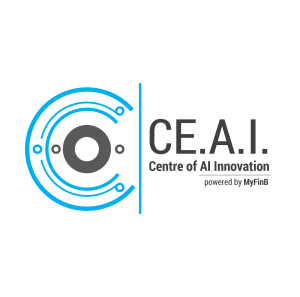AI can bring about significant advancements in video conferencing by allowing companies to manage their meetings more effectively and automating simple tasks such as re-scheduling calls and sending out important notifications.
Due to the outbreak of Covid-19 pandemic, the world shutdown all physical operations and switched to remote work. To cope with the sudden demand, video conferencing tools and software came to be widely used. As an outcome, the global pandemic proved to be a milestone for the video conferencing segment. Gone are the days when video calling was only used in boardrooms for meetings and presentations. It is now extensively used in almost every aspect of our daily lives. Enterprises of all sizes are implementing Artificial Intelligence (AI) and video collaborations to enhance meeting experiences and create smart meeting rooms.
As per a recent survey, 43% of in-house and remote teams use a video conference application and about 73% of corporate companies are using video calling software. A rising number of businesses are also investing heavily in huddle rooms and breakout areas equipped with video devices serving multi-purpose. AI is revolutionizing how we design technology as well as how we use it. In this era of video conferencing driven by innovations in automation, big data analytics, NLP, and computer vision, a paradigm shift is occurring in technology.
Present-day businesses are primarily focused on creating an agile and flexible working environment. With more than half the workforce working remotely in majority enterprises, video conferencing software have become essential for conducting business operations smoothly. Already, video collaboration is a futuristic technology. By infusing AI in the mechanism, it further becomes sophisticated and highly advanced. Hence, technologies like AI and machine learning (ML) are maximising the productivity of organisations and adding real value to them.
How New-Age Tech is Shaping Smart Meeting Rooms
In the forthcoming times, AI will be leveraged to interact with users present both inside and outside of the boardrooms to scale productivity. AI-enabled devices can make conference rooms a lot smarter and our meetings better in ways that haven’t been fathomed before. For instance, AI can bring about significant advancements in video conferencing by allowing companies to manage their meetings more effectively and automating simple tasks such as re-scheduling calls and sending out important notifications. The list also includes tasks like searching and booking available rooms, suggesting the relevant documents in an ongoing meeting, enabling sharing of screen and notifying members of the new changes in pre-scheduled meetings.
AI is renowned for its analytics and decision-making ability. In video conferencing, this can spell endless opportunities as the data insights extracted can be valuable for optimization of facilities management and making effective use of office space too. For example, AI can use predictive analytics to help businesses understand how meeting rooms are being used for boosting the room occupancy level. AI analytics can also track the duration of a meeting and find what is and isn’t working well in the process of conducting meetings.
AI analytics can also suggest the time slot that can be kept free for a meeting, give real-time insights into the sequence of meeting and make it convenient to abstract the actual content. It can assist tech background of the call to make out where people’s internet might be facing glitches and readjust it accordingly to avoid any call dropout. It also tracks engagement levels of the participants in the video conferencing calls, including their mood and tone of voice.
But none of this is possible without advancements in the usage of computer vision in video conference. Computer vision can recognise who is speaking during a call and hence, zoom into the person. It can also gauge how many people are taking part in the meeting and tag the relevant members. It additionally helps in gaze correction and control the background environment of the room to enhance room experience. Computer vision is also useful for colour and light correction in video calls. It can detect visual issues automatically and optimise light balance to bring faces in focus, even in dim or poorly lit conditions.
Summing Up
AI and video conferencing together hold promise to improve user experience and create smart meeting rooms that have productive video meetings. However, it’s not just the meeting participants who stand to gain from AI and other technologies. These advanced technologies can bring in more reliability within the boardroom. Through predictive analytics, the IT departments of companies can monitor networks and endpoints, proactively scan for any performance anomalies and take corrective actions wherever required before the ongoing meetings get affected. The AI-based video conferencing tools are highly resilient and can adapt to new technological changes in no time, which will fundamentally change how boardroom meetings are held
Source: BW Businessworld


